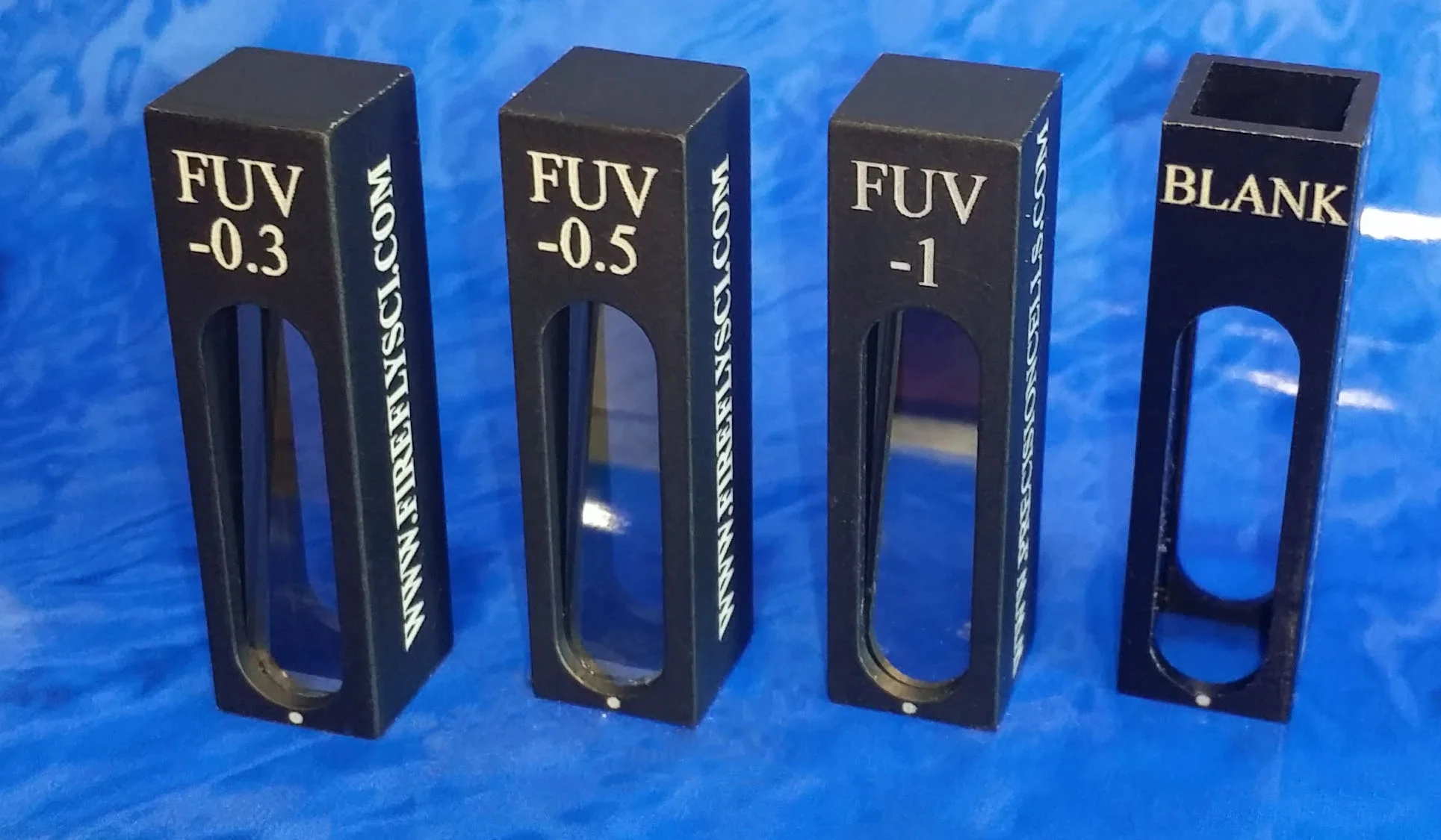Quartz Cuvette Cleaning – Find the best cleaning for your application
/Hi, everyone. One of the most popular questions we get is on quartz cuvette cleaning. Common questions that appear include “Can I soak a cuvette overnight?”; “what temperature can I bake them at in an oven?”; “is xyz solution safe to use?”
Note: you don't need a broom or vacuum to clean your cuvettes.
We’re going to attempt to answer all of the above questions in this post. We will also provide you with a list of common cleaning solutions and formulas that you can try on your cuvettes. All of the suggestions below are safe to use on any type of quartz cuvette as long as the directions are followed exactly as written.
Important note: If you have fritted cuvettes then you will not be able to bake the cells in an oven because they will fall apart.
There is really no need to buy expensive cuvette specific cleaning solutions. All of the recommendations below are made using simple solutions that you most likely already have in your lab.
Let’s start with the soaking question.
Soaking a Quartz Cuvette
First, I’d like to say that soaking a cuvette is dependent on two critical factors: the nature of the solution and the amount of time the cuvette is soaked. The general rule is to never allow cuvettes to soak in any type of concentrated acids, alkalines, or any known materials that can etch quartz such as HF. Cuvettes can safely be soaked in diluted acids for an hour maximum. Actually, diluted sulfuric acid and diluted hydrochloric acid (2M) are great ways to remove stains and residue.
Cleaning detergents are completely safe for soaking. These types of cleaners will not damage the quartz or fritted cuvettes.
Baking Quartz Cuvettes in an Oven
Ok, this one we have to be careful with. As noted above, fritted or glued cells will fall apart if they are soaked and then placed in an oven at high temperature. Fire fused or thermally fused cuvettes can safely be heated up to 900 degrees Celsius without any concern.
Quartz Cuvette Cleaning Solutions
Before we start the list of cleaning solutions, these are just a few tried and try solutions for cleaning various types of samples such as aqueous, organic, etc:
Cuvette Cleaning Solution 1: Good for aqueous solutions
This one was recommended from our friends at Beckman. They use this procedure for cleaning microcells, but it can be used on any size cuvette.
50% 3M HCl and 50% ethanol measured by volume.
Cuvette Cleaning Solution 2: Good for hard-to-remove deposits
Another recommendation from Beckman on a great solution to remove deposits.
Equal parts by volume ethanol and 3N HCl. Rinse the cell immediately with distilled water, air dry and store. Do not soak the cell in this solution for more than 30 seconds.
Cuvette Cleaning Solution 3: Good for Aqueous Solutions
Wash with nitric acid, 50% is good too, for 10 minutes. Carefully remove the acid. Then wash three times with purified water. Finally rinse with acetone, remove excess and let the cuvette air dry.
Cuvette Cleaning Solution 4: Good for Proteins
To remove protein which is still sticking in the cuvette you might want to use trypsin (I just use the left over trypsin from a cell culture); incubate over night at room temperature, wash the cuvette with H20 and finally flush it with ethanol.
Cuvette Cleaning Solution 5: Good for heavy metals and stubborn contaminants
Soak cells in 50% sulfuric acid 2M and 50% DI water. Cells can safely be soaked for 20 minutes. Remove cells from bath and thoroughly rinse with water. Let air dry. Also, aqua regia can be used for heavy metals.
Cuvette Cleaning Solution 6: good for ORGANIC molecules
Concentrated HNO3 or 2M HCl for 10 min, then rinse with DI water, and absolute ethanol or HPLC-grade acetone for a final rinse.
Cuvette Cleaning Solution 7: Good For Circular Dichroism (cd) Cuvettes
This one is only for quartz cuvettes. Immerse the cuvette in concentrated nitric acid (68%) at room temperature and let it sit overnight. This is great for sticky proteins. Rinse cells with ultra pure water to remove any excess nitric acid.
Notes about using ethanol and acetone to clean proteins:
It's not recommended to start washing cuvettes with ethanol after using it with solutions containing protein. Glass gets stained with protein precipitate which may be hard to remove. It's best to use ethanol for the final rinse after washing the cuvette with a good amount of deionized H2O. Same thing with acetone. It will cause residual salts from the buffer solution to precipitate on the glass, which does not make it cleaner.
Notes on what solvents to use:
The purity of solvents used for quartz cuvette cleaning is important for the protection of cells. Try to find solutions that are spectrophotometric grade. For rinsing use only pure water such as distilled, RO, or deionized water. Lastly, try to find detergents with a neutral, or as close to neutral pH. These detergents should be free of any suspended materials containing no lanolin or oils.
Cuvette Washer
All of the above cleaning solutions can safely be used with our P65S or P65D cuvette washer.
Did we miss anything? Do you have a favorite cleaning solution that you would like us to post? Let us know! We want to have the most complete list of quartz cuvette cleaning solutions. You can leave us a comment below or send us an e-mail (info@fireflysci.com).
Here’s to your success!
The FireflySci Team
![firefly_logo_FINAL [Black].jpg](https://images.squarespace-cdn.com/content/v1/5411d5c0e4b02e1c8b27565a/1434491508803-XB4OF7YDY46Z72L5U5AP/firefly_logo_FINAL+%5BBlack%5D.jpg)










